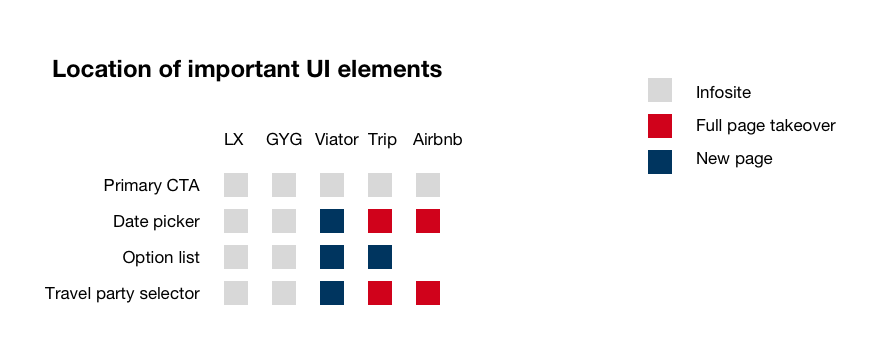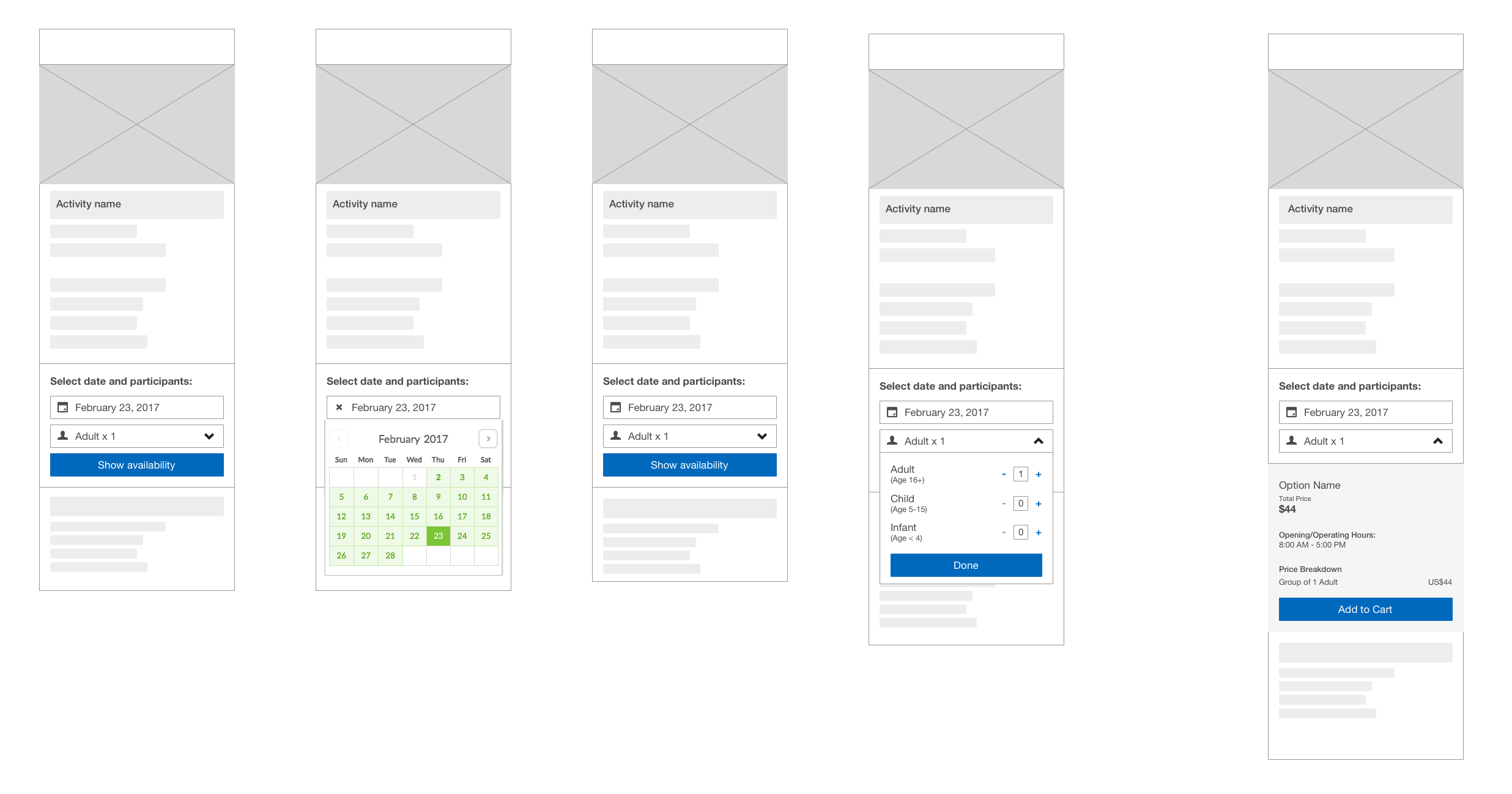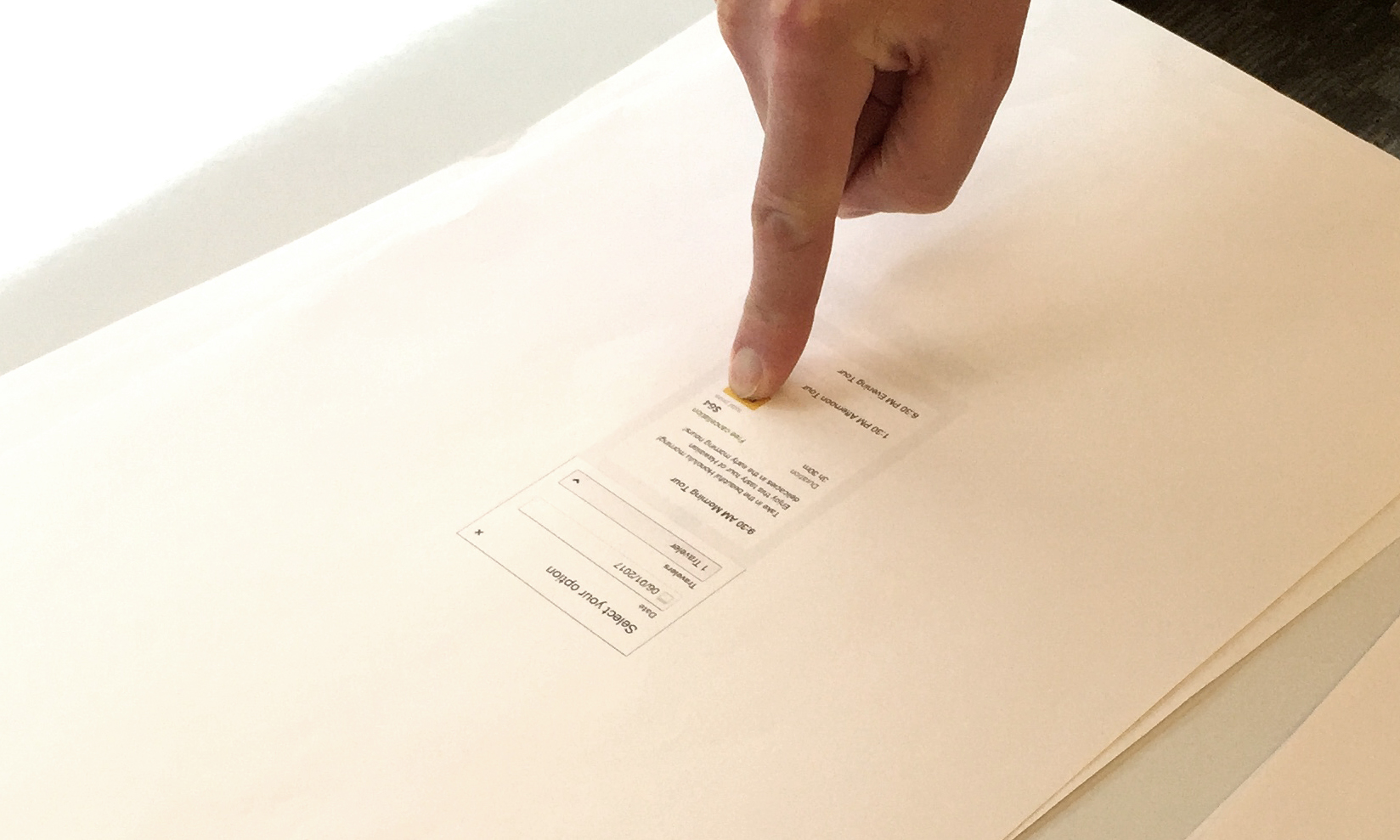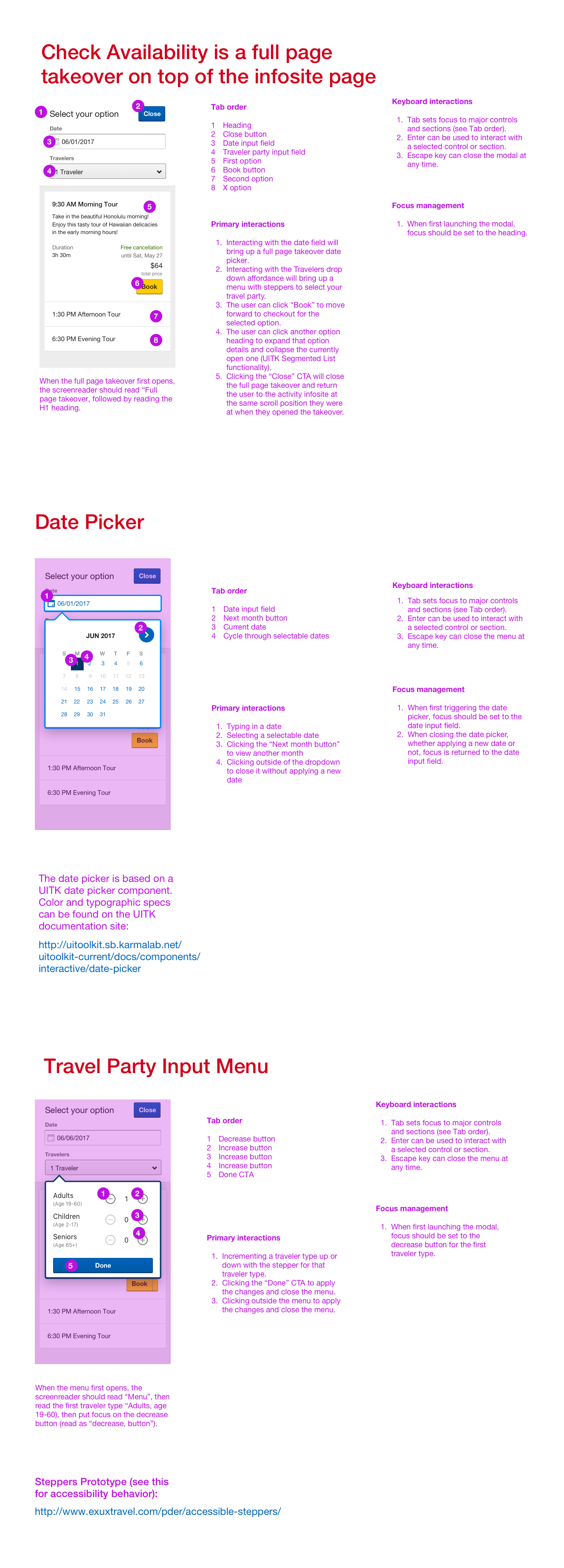This is the design component of a two-part project to improve the booking flow of the Activities shopping path on Expedia:
In spring 2017, I worked on reimagining the booking flow for our Activities line of business. This part of the shopping process had been identified as a user pain point, so our goal was to figure out how users shop, and redesign the interactions to support that.
First, I conducted a competitive analysis of other booking flows on travel sites. These sites included TripAdvisor, Viator, Get Your Guide, and Airbnb. I analzyed the flow as well as where they put key parts of the user interface, such as date entry, travel party entry, and their primary booking CTA.

Next, I broke down each of our competitors by making wireframes in Sketch. This helped me to analyze the most important parts of each flow, and made it easier to compare across sites. As an example, below is my wireframe for Get Your Guide.

After this initial comparison, I found several patterns in how competitors structured their booking flow. Some had a full page takeover with booking options, some utilized a one page flow with expanding sections, and some had a multi-page flow. I decided to explore each of these in wireframes for our potential path.

After exploring the pros and cons of each option, we settled on the full page takeover flow, as it made the process easiest for the user by being accessible from anywhere on the page, as well as letting them go back and forth to check out details about the activity while they were deciding their booking details.
I mocked up a paper prototype in our design style, and then conducted a paper prototyping study with 10 participants to evaluate whether or not users understood the flow. I created a realistic booking scenario, and asked participants to try to book an activity for their family using the paper prototype.

Through the paper prototype usability study, we found that users were generally able to successfully complete the task of booking an activity for a particular date and travel party size. There were a few minor usability issues which we resolved in the next iteration. We tested this new iteration with the last 3 particpants, in RITE fashion, finding it addressed the issues.

One aspect of every design I hand off is accessiblity specs. This details behavior for screen readers and users who navigate using a keyboard. Ensuring proper accessiblity is important both for non-sighted and differently abled users as well as for sighted users. Generally, designing for accessiblity also results in a more usable, well thought out design for everyone.

Through competitive analysis I designed a new best-in-class booking flow for Expedia's Activities line of business, addressing our main usability issues which had been identified through user research with our current path. I evaluated my design through paper prototyping usability studies, iterating based on the findings. This design is now in development and will be launching in the near future. Part of the ongoing evaluative research involves tagging this path to measure metrics such as engagment with core aspects of the experience.
Through this project I gained more experience with competitive analysis, going much farther than I had before in breaking down and understanding our competitors' experiences through creating competitive wireframes. I also gained more experience in planning and conducting research in order to evaluate the effectiveness of my design in solving the identified user problems. This was also the most complex design that I have had to create accessibility specs for so far, which gave me more experience determining how to best convey those details to engineers for development. It also gave me good practice in designing a complex accessible flow.